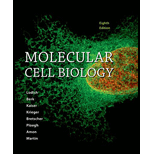
To review:
About Watson-Crick base pairs and the importance of Watson-Crick base pairs.
Introduction:
All the living cells contain genetic information in form of
Explanation of Solution
In the year 1953, two scientists made the biggest contribution in the field of molecular biology. A biologist from American and physicist from Britain discovered the structure of DNA. James Dewey Watson and Francis Harry Compton Crick were the two scientists who deduced the logical structure of formation of DNA and RNA.
According to them, DNA and RNA were polymers made up of four kinds of monomers, which are termed as nucleotides. These nucleotides contain nitrogen bases, which are the main contributing factor behind the structure of these nucleic acids. There are two categories of nitrogen bases, purines (which contain two fused rings) and pyrimidines (which contain one ring). Purines are further of two types and are named as:
- Guanine (G)
- Adenine (A)
Pyrimidines are of three types and named as:
- Uracil (U)
- Thymine (T)
- Cytosine (C)
DNA contains four nitrogen bases mentioned above, except uracil. And, RNA contains all above-mentioned bases except thymine.
The structure of DNA is made of two strands of nucleotides wrapped around each other in form of a double helical structure. In this helix, the strands are held together with each other with the help of bonds present between the bases, which is a universal pairing and is present in all nucleic acids in every living organism. This pairing is as follows:
- A pairs with T, with the help of two hydrogen bonds (in DNA)
- G pairs with C, with the help of three hydrogen bonds (in DNA and RNA)
- A pairs with U, with the help of two hydrogen bonds (in RNA).
These pairs are called as Watson-Crick base pairs. These are universal in nature and responsible for holding the helical structure of DNA or double-stranded RNA.
The base pairs are important because it ensures that bonds are formed between complementary base pairs only. This play a very critical role in the replication of DNA and conservation of genetic information. These pairs are made on the basis of the shape of the bases, size and chemical composition of the nitrogen bases. The pocket where a new
Watson-Crick base pairing defines specific pairing between purines and pyrimidines, which is fixed in all living organisms. Base pairing is important to maintain the genetic information intact and passed correctly to the next generation.
Want to see more full solutions like this?
 Human Anatomy & Physiology (11th Edition)BiologyISBN:9780134580999Author:Elaine N. Marieb, Katja N. HoehnPublisher:PEARSON
Human Anatomy & Physiology (11th Edition)BiologyISBN:9780134580999Author:Elaine N. Marieb, Katja N. HoehnPublisher:PEARSON Biology 2eBiologyISBN:9781947172517Author:Matthew Douglas, Jung Choi, Mary Ann ClarkPublisher:OpenStax
Biology 2eBiologyISBN:9781947172517Author:Matthew Douglas, Jung Choi, Mary Ann ClarkPublisher:OpenStax Anatomy & PhysiologyBiologyISBN:9781259398629Author:McKinley, Michael P., O'loughlin, Valerie Dean, Bidle, Theresa StouterPublisher:Mcgraw Hill Education,
Anatomy & PhysiologyBiologyISBN:9781259398629Author:McKinley, Michael P., O'loughlin, Valerie Dean, Bidle, Theresa StouterPublisher:Mcgraw Hill Education, Molecular Biology of the Cell (Sixth Edition)BiologyISBN:9780815344322Author:Bruce Alberts, Alexander D. Johnson, Julian Lewis, David Morgan, Martin Raff, Keith Roberts, Peter WalterPublisher:W. W. Norton & Company
Molecular Biology of the Cell (Sixth Edition)BiologyISBN:9780815344322Author:Bruce Alberts, Alexander D. Johnson, Julian Lewis, David Morgan, Martin Raff, Keith Roberts, Peter WalterPublisher:W. W. Norton & Company Laboratory Manual For Human Anatomy & PhysiologyBiologyISBN:9781260159363Author:Martin, Terry R., Prentice-craver, CynthiaPublisher:McGraw-Hill Publishing Co.
Laboratory Manual For Human Anatomy & PhysiologyBiologyISBN:9781260159363Author:Martin, Terry R., Prentice-craver, CynthiaPublisher:McGraw-Hill Publishing Co. Inquiry Into Life (16th Edition)BiologyISBN:9781260231700Author:Sylvia S. Mader, Michael WindelspechtPublisher:McGraw Hill Education
Inquiry Into Life (16th Edition)BiologyISBN:9781260231700Author:Sylvia S. Mader, Michael WindelspechtPublisher:McGraw Hill Education





